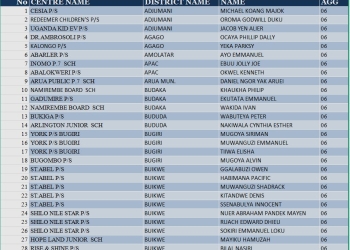
The number of pregnant and breastfeeding adolescent girls and women suffering from acute malnutrition has soared from 5.5 million to 6.9 million – or 25 per cent – since 2020 in 12 countries hardest hit by the global food and nutrition crisis, according to a new report released by UNICEF.
The 12 countries – including Afghanistan, Burkina Faso, Chad, Ethiopia, Kenya, Mali, Niger, Nigeria, Somalia, South Sudan, Sudan and Yemen – represent the epicentre of a global nutrition crisis that has been exacerbated by the war in Ukraine and ongoing drought, conflict, and instability in some countries.
Undernourished and Overlooked: A Global Nutrition Crisis in Adolescent Girls and Women – issued ahead of International Women’s Day – warns that the ongoing crises, aggravated by ongoing gender inequality, are deepening a nutrition crisis among adolescent girls and women that had already shown little improvement in the last two decades.
“The global hunger crisis is pushing millions of mothers and their children into hunger and severe malnutrition,” said UNICEF Executive Director Catherine Russell. “Without urgent action from the international community, the consequences could last for generations to come.”
According to the report – an unprecedented and comprehensive look at the state of adolescent girls’ and women’s nutrition globally – more than one billion adolescent girls and women suffer from undernutrition (including underweight and short height), deficiencies in essential micronutrients, and anaemia, with devastating consequences for their lives and wellbeing.
Inadequate nutrition during girls’ and women’s lives can lead to weakened immunity, poor cognitive development, and an increased risk of life-threatening complications – including during pregnancy and childbirth – with dangerous and irreversible consequences for their children’s survival, growth, learning, and future earning capacity.
Globally, 51 million children under 2 years suffer stunting, meaning they are too short for their age due to malnutrition. Of those, about half become stunted during pregnancy and the first six months of life, the 500-day period when a child is fully dependent on maternal nutrition, according to a new analysis in the report.
“To prevent undernutrition in children, we must also address malnutrition in adolescent girls and women,” Russell added.
South Asia and sub-Saharan African remain the epicentre of the nutrition crisis among adolescent girls and women, home to 2 in 3 adolescent girls and women suffering from underweight globally, and 3 in 5 adolescent girls and women with anaemia. Meanwhile, adolescent girls and women from the poorest households are twice as likely to suffer from underweight as those from the wealthiest households.
Global crises continue to disproportionately disrupt women’s access to nutritious food. In 2021, there were 126 million more food insecure women than men, compared to 49 million more in 2019, more than doubling the gender gap of food insecurity.
Since last year, UNICEF has scaled up its efforts in the countries hardest hit by the global nutrition crisis, including Afghanistan, Burkina Faso, Chad, Democratic Republic of the Congo, Ethiopia, Haiti, Kenya, Madagascar, Mali, Niger, Nigeria, Somalia, South Sudan, Sudan, and Yemen, with an acceleration plan to prevent, detect, and treat wasting in women and children.
The report calls for governments, development and humanitarian partners and donors, civil society organizations and development actors to transform food, health and social protection systems for adolescent girls and women by:
Prioritising adolescent girls’ and women’s access to nutritious, safe and affordable diets, and protecting adolescent girls and women from ultra-processed foods through marketing restrictions, compulsory front-of-pack labelling and taxation.
Implementing policies and mandatory legal measures to expand large-scale food fortification of routinely consumed foods such as flour, cooking oil and salt to help reduce micronutrient deficiencies and anemia in girls and women.
Ensuring adolescent girls and women in low- and middle-income countries have free access to essential nutrition services, both before and during pregnancy, and while breastfeeding, including ante-natal multiple micronutrient supplements.
Expanding access to social protection programmes for the most vulnerable adolescent girls and women, including cash transfers and vouchers to improve girls’ and women’s access to nutritious and diverse diets.
Accelerating the elimination of discriminatory gender and social norms such as child marriage and the inequitable sharing of food, household resources, income and domestic work.
“When a girl or woman does not get adequate nutrition, gender inequality is perpetuated,” said Russell. “Learning and earning potential is lowered. The risk of life-threatening complications, including during pregnancy and childbirth increases, and the odds of giving birth to undernourished babies rise. We know what it takes to get life-saving nutrition support and services to the women and children who need it most. We just need to mobilize the political will and resources to act. There is no time to waste.”

















